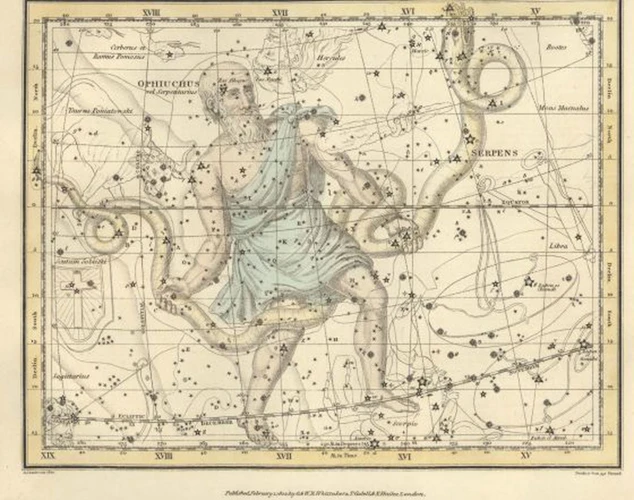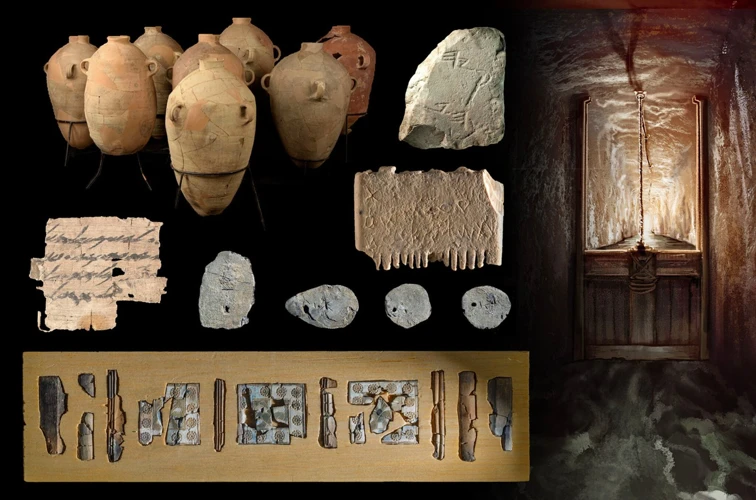Is the legendary founding of Rome a mere myth or a historical reality? This age-old question has fascinated scholars and historians for centuries. The origin story of Rome is steeped in ancient tales, archaeological discoveries, and mythological significance. While some argue that it is nothing more than a mythical narrative, others contend that there is enough evidence to support the actual existence of the city’s founders, Romulus and Remus. Join us as we delve into the historical accounts, archaeological findings, and debate surrounding the founding of Rome to explore the enigmatic origins of one of the world’s greatest civilizations.
Historical Accounts

Historical accounts of the founding of Rome are primarily derived from ancient texts and legends. One of the most well-known tales is that of Romulus and Remus, twin brothers who were said to be descendants of the Trojan prince Aeneas. According to legend, they were abandoned as infants and raised by a she-wolf before ultimately establishing the city of Rome. This story, first mentioned in the writings of ancient Roman historian Livy, has become intertwined with the foundational history of Rome. Livy’s works, including “Ab Urbe Condita,” provide detailed accounts of the early days of Rome and its legendary founders. These texts serve as valuable resources for understanding the narratives and beliefs that shaped Roman history. While some skeptics argue that these accounts are simply mythological tales meant to inspire and unite the Roman people, others believe that they contain kernels of historical truth. The debate surrounding the authenticity of these accounts continues to fascinate scholars and historians to this day.
1. The Tales of Romulus and Remus
The tales of Romulus and Remus are at the heart of the founding mythology of Rome. According to the legend, Romulus and Remus were twin brothers born to the Vestal Virgin Rhea Silvia and the god Mars. Fearful of the potential threat the twins posed, their great-uncle Amulius ordered them to be abandoned in the Tiber River. They were then rescued and raised by a she-wolf, who nurtured and protected them. As they grew older, Romulus and Remus discovered their true lineage and set out to establish their own city. However, a dispute arose between the brothers over where to build the city, leading to a fateful conflict. Romulus prevailed and became the first ruler of Rome, naming the city after himself. The tale of Romulus and Remus serves as a powerful symbol of the city’s foundations, highlighting themes of destiny, divine lineage, and the power struggle that often accompanies the establishment of civilizations. It’s important to note that while the story is a cornerstone of Roman mythology, historians have debated its historical accuracy and its role as a mythical narrative meant to unite and inspire the Roman people.
2. The Ancient Writings of Livy
The ancient writings of Livy, specifically his work “Ab Urbe Condita,” provide crucial insights into the founding of Rome. Livy was a Roman historian who lived during the first century BC and dedicated much of his life to chronicling the history of Rome. In his writings, Livy delves into the origins of Rome, including the story of Romulus and Remus and the city’s early days. His accounts are often cited as valuable historical sources, even though they are not without their critics. While some question the accuracy of Livy’s work and argue that it is embellished with mythical elements, others believe that his writings contain kernels of truth that shed light on the historical foundation of Rome. Despite the varying interpretations, Livy’s work remains a significant contribution to our understanding of ancient Roman history, providing valuable insights into the origins and legends surrounding the founding of Rome.
Archaeological Discoveries

Archaeological discoveries have provided valuable insights into the historicity of Rome’s founding. Excavations on the Palatine Hill, one of the seven hills of Rome, have unearthed remains dating back to the 8th century BCE, adding credence to the existence of an early settlement at the site. The discovery of huts and primitive structures suggests human habitation during this period. The Ara Pacis, an altar dedicated to the Roman goddess of peace, was erected in 13 BCE to commemorate Augustus’ establishment of Pax Romana. The altar depicts scenes from Roman mythology and serves as a visual representation of the cultural and historical significance attributed to the founding of Rome. These archaeological findings provide tangible evidence of the city’s ancient origins and contribute to the ongoing scholarly discussion surrounding its legendary founding.
1. The Palatine Hill Excavations
The Palatine Hill, one of the seven hills of Rome, has played a significant role in uncovering evidence for the founding of Rome. Excavations conducted on the Palatine Hill have revealed ancient structures and artifacts that provide insights into the city’s early history. Archaeologists have discovered what is believed to be the remains of a Bronze Age settlement, dating back to the 9th century BCE, on the hill. These findings suggest that human habitation existed on the Palatine Hill long before the traditional founding of Rome. Additionally, excavations have uncovered remnants of a wall, known as the Roma Quadrata, which is believed to have been built by Romulus to mark the boundaries of the city. The discovery of these ancient structures lends credibility to the historical accounts and legends surrounding the founding of Rome. It provides tangible evidence that supports the notion that Rome was not merely a mythical city but had a foundation rooted in physical reality. The Palatine Hill excavations continue to be a rich source of archaeological discoveries that contribute to our understanding of Rome’s early history.
2. The Ara Pacis Commemorates Rome’s Founding
The Ara Pacis, an ancient Roman altar, holds significant archaeological and historical importance in relation to the founding of Rome. This magnificent monument, erected during the reign of Emperor Augustus, is believed to commemorate the peace and prosperity brought to Rome under his rule. The carvings on the altar depict various scenes, including those related to the mythical origins of Rome. One panel, in particular, shows the legendary figure of Romulus, one of the city’s founders, accompanied by the personification of Rome. This artistic representation highlights the belief held by the Romans that their city was ultimately founded by the divine and chosen to rule the world. The inclusion of such mythological imagery on the Ara Pacis reinforces the connection between Rome’s founding and its religious and cultural significance. This archaeological discovery not only provides tangible evidence of the Romans’ veneration of their city’s origins but also serves as a testament to the enduring impact of Roman mythology on the ancient Roman society. [Link: /significance-roman-mythology-ancient-roman-society/]
Mythological Significance

The mythological significance of the founding of Rome cannot be understated. The influence of Greek mythology on Roman culture is evident in the origin story of Rome itself. According to ancient Roman beliefs, the Trojan prince Aeneas played a pivotal role in the city’s foundation. As a descendant of the goddess Venus, Aeneas was seen as a divine figure and a symbol of destiny. His journey from Troy to Italy is chronicled in the epic poem “The Aeneid” by Virgil, which further solidifies the connection between Greek and Roman mythology. The legends surrounding Aeneas and his descendants, including Romulus and Remus, served to establish the divine lineage of Rome’s rulers and cement the city’s importance in the ancient world. The mythological narrative surrounding the founding of Rome contributed to the cultural and religious beliefs of ancient Roman society, shaping its identity and inspiring generations to come.
1. The Influence of Greek Mythology
The influence of Greek mythology on the founding of Rome is a topic of great significance. The Romans, like many ancient civilizations, were heavily influenced by Greek culture, including their myths and legends. The Romans adopted and adapted various Greek myths to suit their own narrative and historical context. One such example is the story of Aeneas, a Trojan prince who plays a crucial role in both Greek and Roman mythology. In Greek mythology, Aeneas is a minor character in Homer’s “Iliad,” but in Roman mythology, he becomes a central figure. The Romans believed that Aeneas fled the burning city of Troy and eventually settled in Italy, thus laying the foundation for the future city of Rome. The epic poem “Aeneid” by the Roman poet Virgil further solidified the connection between Aeneas and the founding of Rome. This blending of Greek and Roman mythology not only provided the Romans with a prestigious lineage but also served to establish a sense of cultural identity and legitimacy. It is through this lens of Greek influence that we can begin to unravel the complex origins of Rome and its mythological foundations. For more information on the influence of Greek mythology on Roman culture, you can refer to our article on “The Influence of Greek Mythology on Roman Culture“.
2. The Divine Lineage of Aeneas
The divine lineage of Aeneas plays a crucial role in the mythological significance of Rome’s founding. According to ancient Roman mythology, Aeneas was a Trojan prince who escaped the fall of Troy and embarked on a perilous journey. He was believed to be the son of the goddess Venus (or Aphrodite in Greek mythology) and Anchises, a mortal man. This divine heritage bestowed upon Aeneas a special status as a hero and a connection to the gods. His journey, as recounted in the epic poem “The Aeneid” by the Roman poet Virgil, is filled with adventure, obstacles, and divine guidance. Aeneas eventually arrived in Italy, where he married the Latin princess Lavinia and became the progenitor of the Roman people. This divine lineage not only elevates the mythological status of Rome but also establishes a link between the Trojans and the Romans, connecting two important civilizations of the ancient world. The influence of Aeneas’s story can be seen in various works of literature and art throughout Roman history, emphasizing the significance of Roman mythology in shaping the beliefs and identity of ancient Roman society(/roman-mythology-in-literature/).
Historical Context

To fully comprehend the founding of Rome, it is crucial to understand the historical context in which it took place. Prior to the emergence of the Roman civilization, Italy was home to various pre-Roman civilizations such as the Etruscans, Greeks, and Latin tribes. These societies had their own unique cultures, customs, and political systems. The Etruscans, in particular, played a significant role in shaping early Rome through their influence on architecture, religion, and governance. Over time, the Latin tribes gained prominence in the region and eventually formed alliances and conflicts with neighboring communities. As Rome began to grow in power and influence, it slowly absorbed and assimilated these pre-existing cultures, defining its own distinct identity in the process. This complex historical background provides important context for understanding the dynamics and transformations that led to the founding of Rome.
1. Pre-Roman Civilizations in Italy
When considering the historical context of the founding of Rome, it is crucial to understand the existence of pre-Roman civilizations in Italy. Before the rise of Rome, the Italian peninsula was inhabited by various ancient cultures and tribes. The Etruscans, for example, were a highly developed civilization that thrived in central Italy. They had a strong influence on the region, especially in terms of art, architecture, and religious practices. Another significant group was the Latin tribes, who occupied the area around Rome and eventually merged with the Romans. The Latins had their own distinct culture and language, which played a vital role in the formation of Roman society. Additionally, other indigenous Italic tribes, such as the Sabines and the Samnites, also had a presence in Italy before the rise of Rome. These pre-Roman civilizations were fundamental in shaping the social, political, and cultural landscape of the Italian peninsula, laying the groundwork for the eventual emergence of Rome as a dominant power in the region.
2. The Rise of Etruscans and Latin Tribes
The rise of the Etruscans and Latin tribes played a significant role in the historical context of Rome’s founding. The Etruscans were an ancient civilization that thrived in central Italy, and their influence on Rome cannot be underestimated. Through archaeological evidence and historical accounts, we know that the Etruscans established powerful city-states and exerted their control over the region. They introduced advanced skills in metallurgy, urban planning, and art, which greatly influenced the early development of Rome. The Etruscans also influenced the religious and cultural practices of the Romans, with some scholars suggesting that the Romans adopted their gods and even the practice of divination.
In addition to the Etruscans, the Latin tribes were also prominent in the region. These tribes, comprised of various Italic-speaking communities, inhabited the area around Rome and had their own distinct cultures and political organizations. The Latin tribes had developed significant trade networks and alliances among themselves, further contributing to the growth and development of the region.
The interactions between the Etruscans, Latin tribes, and the early Romans were complex and multifaceted. It is believed that the Romans, initially under Etruscan influence, gradually gained autonomy and eventually overthrew Etruscan rule. This marked a turning point in the history of Rome and laid the foundation for its emergence as a powerful city-state.
The rise of the Etruscans and Latin tribes played a crucial role in shaping the historical context of Rome’s founding. Their contributions, both cultural and political, left a lasting impact on the early development of Rome and set the stage for its future greatness.
Debate and Interpretation

The debate and interpretation surrounding the founding of Rome are complex and multifaceted. On one hand, there are those who question the historical accuracy of the founding myths and consider them to be purely symbolic or legendary in nature. They argue that the tales of Romulus and Remus serve as a means of establishing Rome’s divine legitimacy and glorifying its origins. On the other hand, there are proponents who believe that these myths contain elements of historical truth, albeit embellished over time. They argue that the existence of physical structures and monuments, as well as references by ancient authors, provide evidence for the founding of Rome. This ongoing debate raises fundamental questions about the nature of history and the role of myth in shaping collective identities. It is a topic that continues to captivate both scholars and enthusiasts alike, reminding us of the intricacies inherent in interpreting historical events and the blurred lines between fact and fiction.
1. Historical Accuracy vs. Mythical Symbolism
The debate between historical accuracy and mythical symbolism surrounding the founding of Rome is a complex and enduring one. On one hand, proponents of historical accuracy argue that there are elements of truth within the myths and legends. They point to archaeological evidence, such as the excavation of the Palatine Hill, where ancient structures believed to date back to the time of Romulus and Remus have been discovered. Additionally, they highlight the writings of Livy and other ancient authors who provide detailed accounts of Rome’s early history, suggesting a basis in reality. However, critics argue that the founding myths of Rome are infused with mythical symbolism that serves a larger purpose, such as glorifying the city’s origins and establishing a divine lineage. The tale of Romulus and Remus, for example, can be seen as a story of ambition, rivalry, and the triumph of Rome over its enemies. These symbolic interpretations suggest that the myths were crafted to shape Rome’s identity and provide a powerful narrative for its citizens. Ultimately, the question of historical accuracy versus mythical symbolism may never be definitively answered, as it is likely that elements of both are present in the founding narratives of Rome.
2. The Roman Perspective
The Roman perspective offers a unique lens through which to examine the legendary founding of Rome. From a Roman viewpoint, the story of Romulus and Remus holds great significance as it establishes a divine lineage and justifies Rome’s power and authority. According to Roman mythology, Romulus, one of the twin brothers, becomes the first King of Rome and goes on to establish the city as a powerful and prosperous entity. This perspective portrays Rome as a chosen city, destined for greatness. The Romans believed that their city was not just any city, but one blessed and favored by the gods. This belief in divine intervention reinforced their sense of national identity and moral superiority. The Roman perspective also highlighted the virtue of patriotism and the importance of loyalty to the city and its traditions. The stories surrounding the founding of Rome were often embellished and grandiose, emphasizing heroic deeds and supernatural events. This served to reinforce the Romans’ pride in their heritage and the illustrious origins of their civilization. While historians recognize that these narratives may contain mythical elements, they acknowledge the profound impact they had on shaping Roman culture and ideology. The Roman perspective on the founding of Rome, therefore, reveals a complex intertwining of mythology, history, and cultural identity. It underscores the importance of the founding narrative as a unifying force within the Roman Empire and a source of pride for its citizens.
Evidence for the Founding
The evidence supporting the founding of Rome is found in a combination of physical structures, monuments, and literary references. Archaeological discoveries have unearthed ruins and artifacts that suggest the existence of an early settlement on the Palatine Hill, which is commonly associated with the legendary founding of Rome. Excavations on the Palatine Hill have revealed ancient structures, including the Hut of Romulus, thought to be the humble beginnings of the city. Additionally, the Ara Pacis, an altar built to commemorate the Augustan peace, features depictions of Romulus and Remus, further reinforcing the importance of their mythological story in Roman society. Literary references by ancient authors such as Livy and Virgil also provide valuable insights into the founding of Rome. These sources not only recount the tales of Romulus and Remus but also offer details about the early development of the city and its rulers. While some argue that these pieces of evidence merely support the legendary aspects of Rome’s founding, others contend that they provide substantial indications of its historical reality.
1. Physical Structures and Monuments
Physical structures and monuments provide intriguing evidence for the founding of Rome. One notable example is the Palatine Hill, one of the seven hills of Rome, which has been the site of extensive archaeological excavations. These excavations have unearthed structures dating back to the 9th century BCE, indicating the presence of a settlement during that time. The discovery of huts, walls, and pottery fragments suggests the existence of an early community on this hill, aligning with the traditional narrative of Rome’s founding. Another significant monument is the Ara Pacis, a grand altar dedicated to the Roman goddess of peace, Pax. It was commissioned by Emperor Augustus and inaugurated in 9 BCE. The decorative reliefs on the altar depict scenes from Roman mythology and history, including the mythical foundation of Rome. The inclusion of such a monumental structure highlights the importance and commemoration of Rome’s founding in the collective memory of the ancient Romans. These physical structures and monuments provide tangible evidence that supports the historical reality of the founding of Rome.
2. Literary References by Ancient Authors
Literary references by ancient authors provide valuable insight into the founding of Rome. Ancient writers, such as Virgil, Ovid, and Dionysius of Halicarnassus, have contributed to the understanding of Rome’s origins through their epic poems, historical accounts, and mythological narratives. Virgil’s epic poem, the Aeneid, is perhaps the most famous literary work that ties into the founding of Rome. It follows the hero Aeneas, who escapes the fall of Troy and eventually settles in Italy, becoming the ancestor of Romulus and Remus. Ovid’s Metamorphoses also includes references to the founding of Rome, portraying Romulus as a fierce and ambitious leader. Dionysius of Halicarnassus, a Greek historian, wrote an extensive account of Roman history in his work, Roman Antiquities, which provides insight into the early origins and myths surrounding the founding of Rome. These literary references not only enrich our understanding of the myths and legends surrounding Rome’s foundation, but they also showcase the significance of mythology in ancient Roman society. The stories of the city’s founders became intertwined with the cultural identity and political legitimacy of Rome, shaping the collective memory and historical traditions of the ancient Romans.
Conclusion
In conclusion, the legendary founding of Rome remains an intriguing enigma that continues to captivate scholars and historians. While the historical accounts and archaeological discoveries offer some insights into the city’s origins, there is still a level of uncertainty and debate surrounding the topic. The tales of Romulus and Remus, as well as the writings of Livy, provide a narrative framework for the founding of Rome, but they are also intertwined with mythological elements and symbolism. The archaeological excavations on the Palatine Hill and the presence of the Ara Pacis monument further contribute to the discussion, but their interpretation is subject to differing viewpoints. The influence of Greek mythology and the divine lineage of Aeneas add another layer of complexity to the story. Moreover, the historical context of pre-Roman civilizations and the rise of the Etruscans and Latin tribes provide a broader perspective on the founding of Rome. Ultimately, the conclusion regarding the reality or myth of Rome’s founding may lie somewhere in the middle, acknowledging both historical elements and mythical symbolism.
Frequently Asked Questions
1. Was Rome actually founded by Romulus and Remus?
The founding of Rome by Romulus and Remus is a legendary tale that has been passed down through generations. While the story holds significant mythological and cultural importance, the historical accuracy of the existence of Romulus and Remus as actual individuals is uncertain. The founding of Rome likely involved a more complex historical process involving multiple influences and events.
2. Who was Aeneas and how does he relate to the founding of Rome?
Aeneas was a legendary hero in Greek and Roman mythology who played a crucial role in the founding of Rome. According to mythology, Aeneas was a Trojan prince who survived the fall of Troy and embarked on a long journey that eventually led him to Italy. It is believed that Aeneas settled in the region and his descendants, including Romulus and Remus, became the founders of Rome.
3. What are the different accounts of Rome’s founding?
There are various accounts of Rome’s founding, the most famous being the tale of Romulus and Remus. This story narrates how the twin brothers were abandoned, raised by a she-wolf, and went on to establish the city of Rome. Other historical accounts, such as those provided by Livy, mention different versions of Rome’s early history, including the influence of Etruscan and Latin tribes.
4. What role does Greek mythology play in the founding of Rome?
Greek mythology had a significant influence on Roman culture and the foundation of Rome. The Romans adopted and adapted many Greek myths, including the story of Aeneas and his connection to the founding of Rome. The Romans saw themselves as descendants of the Trojans and sought to establish a connection to the powerful Greek civilization through mythology.
5. Are there any physical structures or monuments that support the founding of Rome?
Yes, there are physical structures and monuments that provide evidence of Rome’s ancient origins. Excavations on the Palatine Hill in Rome have revealed remains of early huts and structures, suggesting human settlement in the area. Additionally, the Ara Pacis, an altar dedicated to the peace and prosperity of Rome, serves as a commemoration of the city’s founding.
6. What were the pre-Roman civilizations in Italy?
Before the foundation of Rome, Italy was inhabited by various civilizations. Some of the significant pre-Roman civilizations include the Etruscans, who had a complex society and influenced Roman culture, and the Latin tribes, who were also integral in shaping early Roman history.
7. How did the rise of the Etruscans and Latin tribes impact the founding of Rome?
The rise of the Etruscans and Latin tribes had a profound impact on the founding of Rome. The Etruscans, a powerful civilization in central Italy, influenced Roman religion, architecture, and society. The Latin tribes, including the Sabines, played a role in the early development and expansion of Rome.
8. Is there a debate between historical accuracy and mythical symbolism in the accounts of Rome’s founding?
Yes, there is an ongoing debate amongst scholars regarding the historical accuracy of the accounts of Rome’s founding. Some argue that these stories contain elements of mythical symbolism that reflect the values and beliefs of ancient Roman society, while others believe that they hold historical truths embedded within the mythological narratives.
9. What is the Roman perspective on the founding of Rome?
The Roman perspective on the founding of Rome is largely shaped by the accounts written by ancient Roman historians such as Livy. These texts elevate the legendary origins of Romulus and Remus and emphasize Rome’s divine lineage through Aeneas, solidifying the city’s exceptional status as the Eternal City.
10. Are there literary references by ancient authors that support the founding of Rome?
Yes, ancient authors such as Livy, Virgil, and Ovid make references to the founding of Rome in their literary works. These authors, although writing during different periods, contribute to the narrative surrounding Rome’s foundation, providing historical insights and mythological interpretations.








